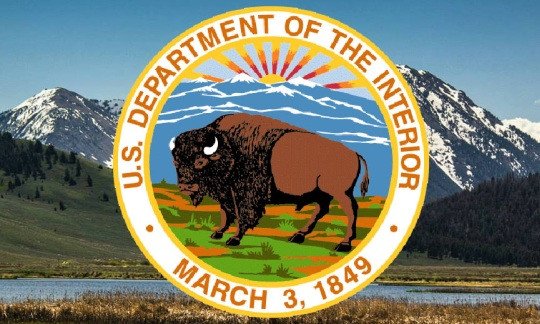Interior Dept. provides $400,000 for Ochoco Preserve restoration project, channel restoration

WASHINGTON (KTVZ) — The Department of the Interior announced Friday a $35 million investment in fiscal year 2023 funding from President Biden’s Bipartisan Infrastructure Law for 39 projects in 22 states - including Crook County, Oregon - that will address outdated or obsolete dams, culverts, levees and other barriers fragmenting our nation’s rivers and streams.
The National Fish Passage Program funding includes $400,000 for Phase 2 of the Ochoco Preserve restoration.
Agency officials said it will reconstruct a channel along Prineville's western urban growth boundary. The reconstruction will improve salmon and steelhead habitat while providing future public access for recreation.
"The restored channel will mitigate climate impacts to the surrounding community such as flooding and water temperature," the Interior Department announcement said.
Here's the rest of the Interior Department news release:
Friday’s announcement is part of the Department’s five-year $200 million commitment to restore free-flowing waters, allowing fish migration and protecting communities from flooding rivers and streams. It is also part of an over $3 billion investment in fish passage and aquatic connectivity projects under the Investing in America agenda, which includes funding from the Bipartisan Infrastructure Law and Inflation Reduction Act.
“President Biden’s Bipartisan Infrastructure Law provides a once-in-a-generation opportunity to invest in our nation’s rivers, streams and communities and help restore habitat connectivity for aquatic species around the country,” said Secretary Deb Haaland. “As the effects of climate change continue to intensify, Tribal Nations in particular are facing unique climate-related challenges that threaten resources vital to Indigenous communities. These fish passage investments will support community-led transitions and facilitate long-term conservation and economic growth in these areas.”
Each of the funded projects was developed collaboratively by local partners and selected through a competitive process led by an interdisciplinary panel of experts from multiple federal agencies, including the U.S. Fish and Wildlife Service, the U.S. Forest Service and National Marine Fisheries Service. Nine of the projects receiving investments will be led by Tribal partners, and many will help with conservation efforts for threatened or endangered species.
“Across the country there are millions of barriers that block viable corridors for fish and other aquatic wildlife to access spawning grounds, food sources and safe water. This historic law is giving these aquatic species a chance,” said U.S. Fish and Wildlife Service Director Martha Williams. “Funding from the Bipartisan Infrastructure Law bolsters our efforts to improve fish passage that ultimately conserves freshwater and migratory fish and wildlife, promotes safer community infrastructure, and encourages climate resiliency.”
Projects will be funded in Alaska, Arizona, California, Idaho, Indiana, Iowa, Maine, Maryland, Massachusetts, Michigan, Montana, New Hampshire, New Jersey, New Mexico, North Carolina, Oklahoma, Oregon, South Carolina, South Dakota, Washington, West Virginia and Wyoming. Details are available on the U.S. Fish and Wildlife Service’s website.
This investment delivers on one of the America the Beautiful initiative’s six early focus areas (supporting collaborative conservation of fish and wildlife habitat and corridors) and is consistent with the Administration’s Corridors and Connectivity Guidance.
The rivers, streams and coastal systems of North America once supported vast annual runs of fish such as Atlantic salmon, American shad, Pacific salmon and steelhead. These species and many others, including some at-risk and listed species, depend on connected streams and high-quality habitat to survive. During the past 200 years, many of these populations have decreased drastically, in large part due to the proliferation of barriers like dams and undersized culverts, and watershed development that blocks fish from their natural migrations.
The Service’s National Fish Passage Program is a leader in pulling partners together to restore connectivity to fragmented rivers. The program provides financial, engineering and planning assistance to communities, Tribes, states and landowners to support barrier removal and river restoration projects. Since 1999, the program has worked with over 2,000 partners to remove or bypass over 3,400 barriers to fish passage and reopen access to over 61,000 miles of upstream habitat for fish and other animals.
Friday’s announcement comes as the Endangered Species Act turns 50 years old in 2023. Throughout the year, the Department is celebrating the ESA's importance in preventing imperiled species' extinction, promoting the recovery of wildlife and conserving the habitats upon which they depend. The ESA has been highly effective and credited with saving 99% of listed species from extinction.
Thus far, more than 100 species of plants and animals have been delisted based on recovery or reclassified from endangered to threatened based on improved conservation status, and hundreds more species are stable or improving due to the collaborative actions of Tribes, federal agencies, state and local governments, conservation organizations and private citizens.
A multi-agency interactive map featuring Bipartisan Infrastructure Law funded fish passage projects can be viewed on the newly launched Fish Passage Portal.



